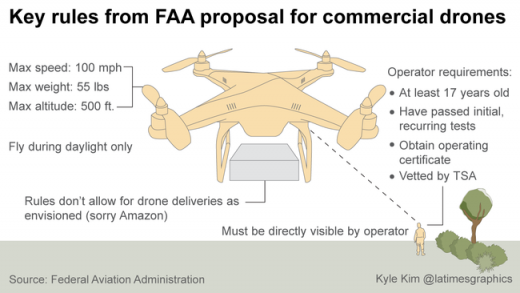 Scroll Down to see all of this week’s updates
Scroll Down to see all of this week’s updates
TC Inspectors Warn About SMS

The chair of the Canadian Federal Pilots Association is calling on the federal government to beef up direct oversight of commercial aviation operations.
In an op-ed article in the Ottawa Citizen, Greg McConnell, whose union represents TC pilot/inspectors, says the department has “all but abandoned direct operational oversight of airlines.”
About 10 years ago, the feds required major carriers to adopt safety management systems to monitor their own safety systems under the overall oversight of Transport Canada.
But McConnell says TC has virtually abandoned that oversight role by drastically cutting back on the number and extent of inspections intended to ensure the SMS system is effective.
“We seldom, if ever, conduct no-notice inspections, ramp checks, pilot check rides and other activities that once gave us a window into the state of safety of an airline,” McConnell said. “Commercial air operators in Canada can go for as long as five years without a single SMS assessment. That’s far too long and well beyond the international requirement for yearly inspections.”
McConnell said the cuts made by the former Conservative government have severely impaired the monitoring effectiveness of the pilot/inspectors who remain.
Canada’s aviation safety regulator has grounded the pilots who work as aviation inspectors, causing their qualifications to atrophy, preventing them from staying current with rapidly changing aviation technology and cutting their training at the same time,” he wrote. “There have never been fewer fully trained pilots whose qualifications are current and up to date working as aviation inspectors.
Ice Damages Q400 Window

Jazz Aviation says ice was the likely culprit in damaging a window on one of its Bombardier Q400s last week.
Passengers aboard the flight from Charlottetown to Montreal were rattled by a loud noise during the flight. Window seat passenger David Smith said he lifted the shade just in time to see the ice smack the window, damaging the outer pane.
It’s likely the ice was flung from the number one engine propeller, which Jazz spokeswoman Terri Udle told the CBC is a “rare occurence” but one the aircraft designers anticipated.
“The aircraft was a Q400 and is designed with a protective ice shield on the side of the aircraft to prevent damage to the fuselage of the aircraft,” she said. “The window affected is designed with the same structural integrity and, therefore, limited the damage to the outer pane.”
The window was replaced and the aircraft returned to service.
T-33 Monument Under Repairs

It’s not often that an aircraft that hasn’t flown for 40 years is involved in a collision but the T-33-on-a-stick in Gimli, Manitoba has been grounded for repairs.
A construction vehicle clipped one of the wingtip fuel tanks and the city has taken the aircraft down temporarily while it figures out how to fix it.
The T-bird has been displayed since 1971 when the federal government closed Gimli Air Force Base. Gimli was a major training base for the air force and the T-33 was one of the last aircraft used there.
The historical significance of the base has prompted the city to ensure the aircraft is returned to a place of honour.
“People want to see it back. It’s something that’s part of our history. It’s part of our community,” Gimli Mayor Randy Woronium told the CBC. “”We’re going to endeavour to try and get it back as soon as we can.”
A local tradesman is going to try to fix the tank but failing that Woroniuk said he’s willing to go some distance to ensure its properly repaired. He may go to an aircraft boneyard in the Mojave desert to get a fuel tank from a T-bird still in storage there.
Canada Now Lags On Drone Rules
 Just 18 months ago, Canada was seen as a leader in the integration of small unmanned aircraft into the airspace system but sweeping new regulations in the U.S. have turned the tables.
Just 18 months ago, Canada was seen as a leader in the integration of small unmanned aircraft into the airspace system but sweeping new regulations in the U.S. have turned the tables.
Transport Canada announced proposed rules to allow limited commercial use of drones in unpopulated areas in late 2014.
But on Tuesday, the U.S. FAA announced rules that will allow broad use of drones for business as long as pilots pass a written test that ensures knowledge of the drone rules and basic airspace requirements.
“The big deal is the Americans have implemented their rules with none of the bureaucracy and overhead that we have in Canada,” Unmanned Systems Canada Chairman Mark Aruja told the CBC. “It’s a much more complex process.”
There is no indication that Transport Canada intends to follow suit and that means trouble for what was a burgeoning drone industry in Canada.
In an email, TC told the network the new rules in the U.S. are similar to those covered by special flight operations certificates required in Canada, except, of course, for the absence of any application process in the U.S. model.
TC told the CBC Canada is “a world leader in unmanned air vehicle safety.” A total of 6,849 SFOCs have been issued in Canada.
